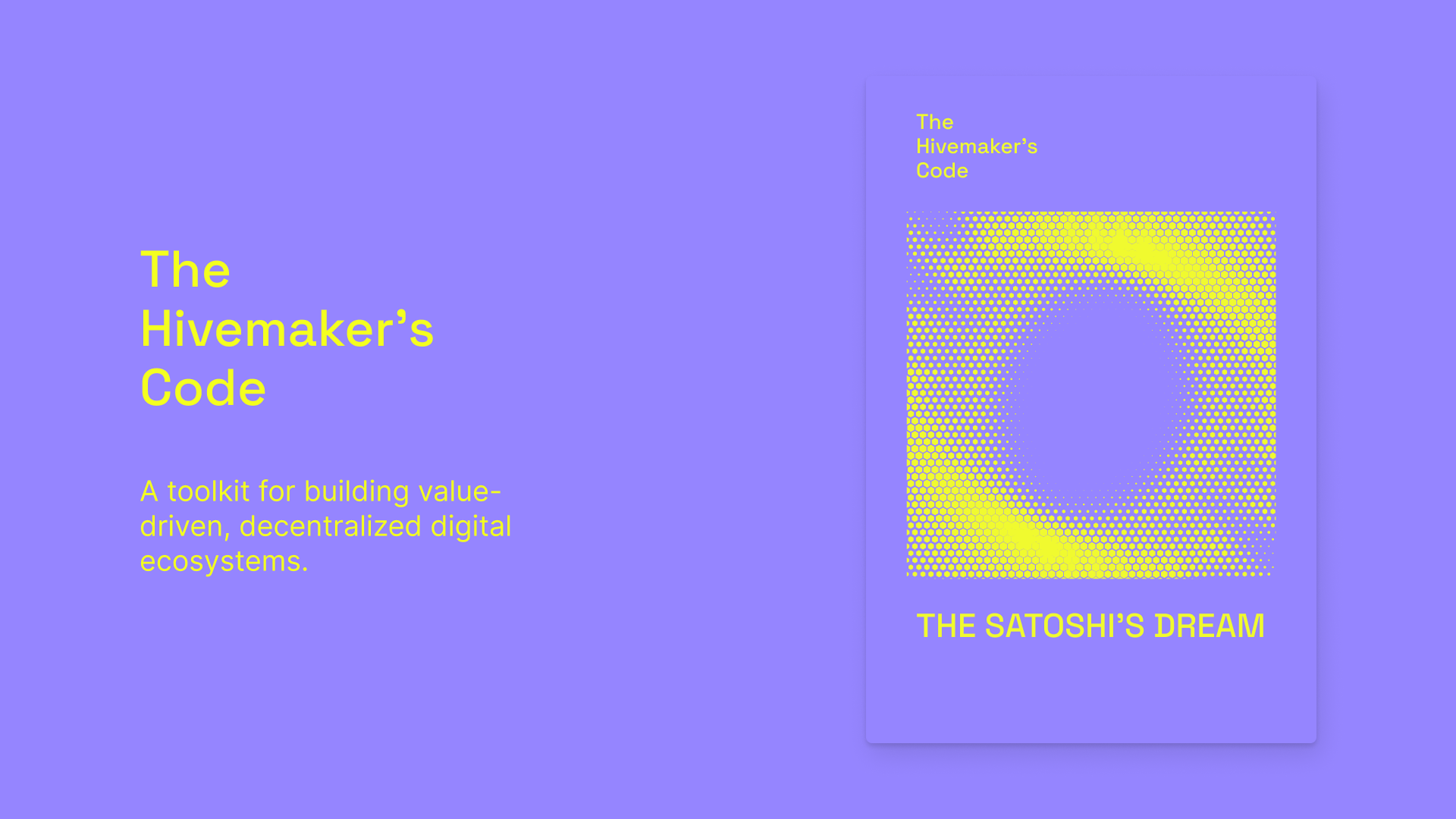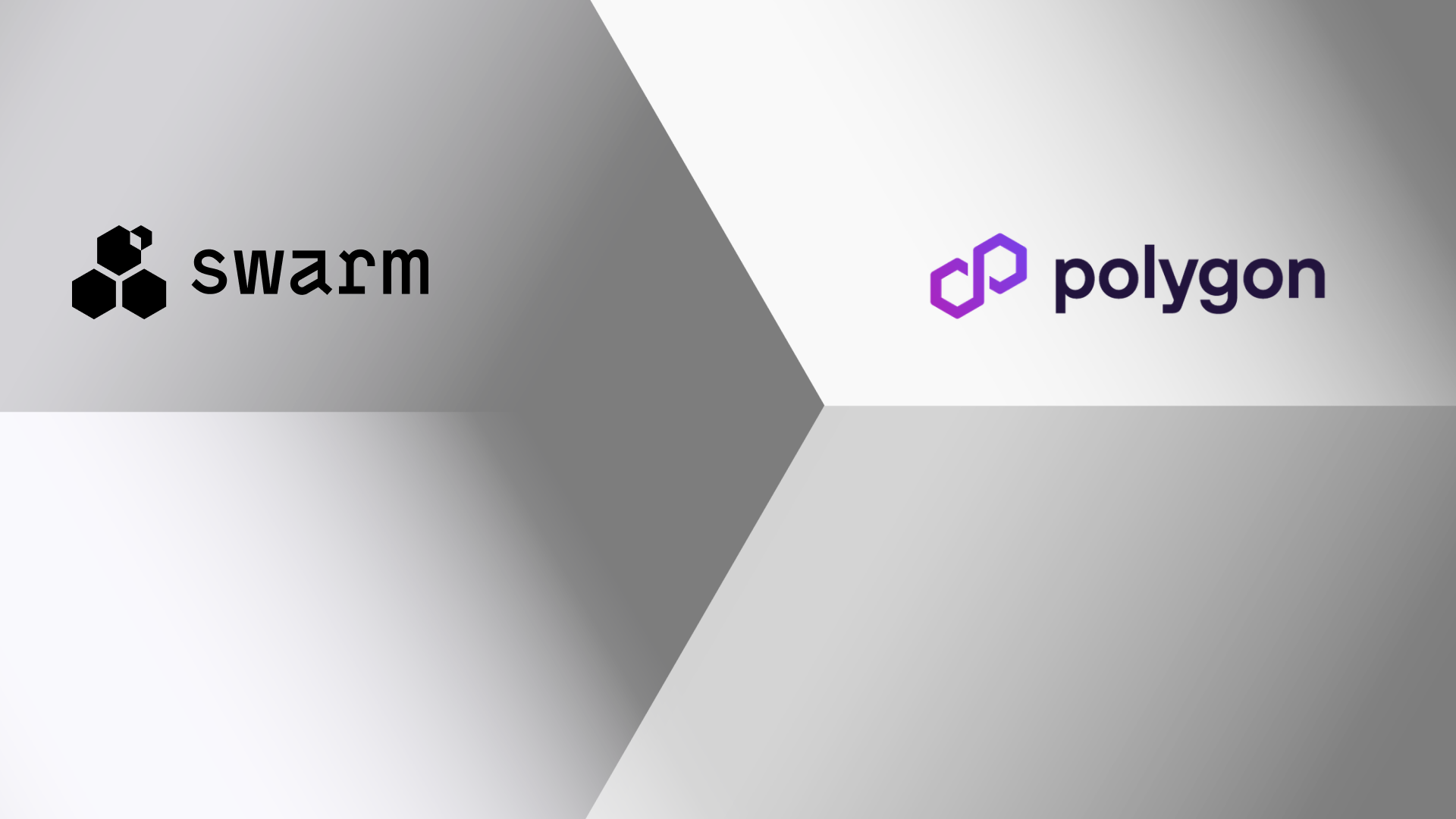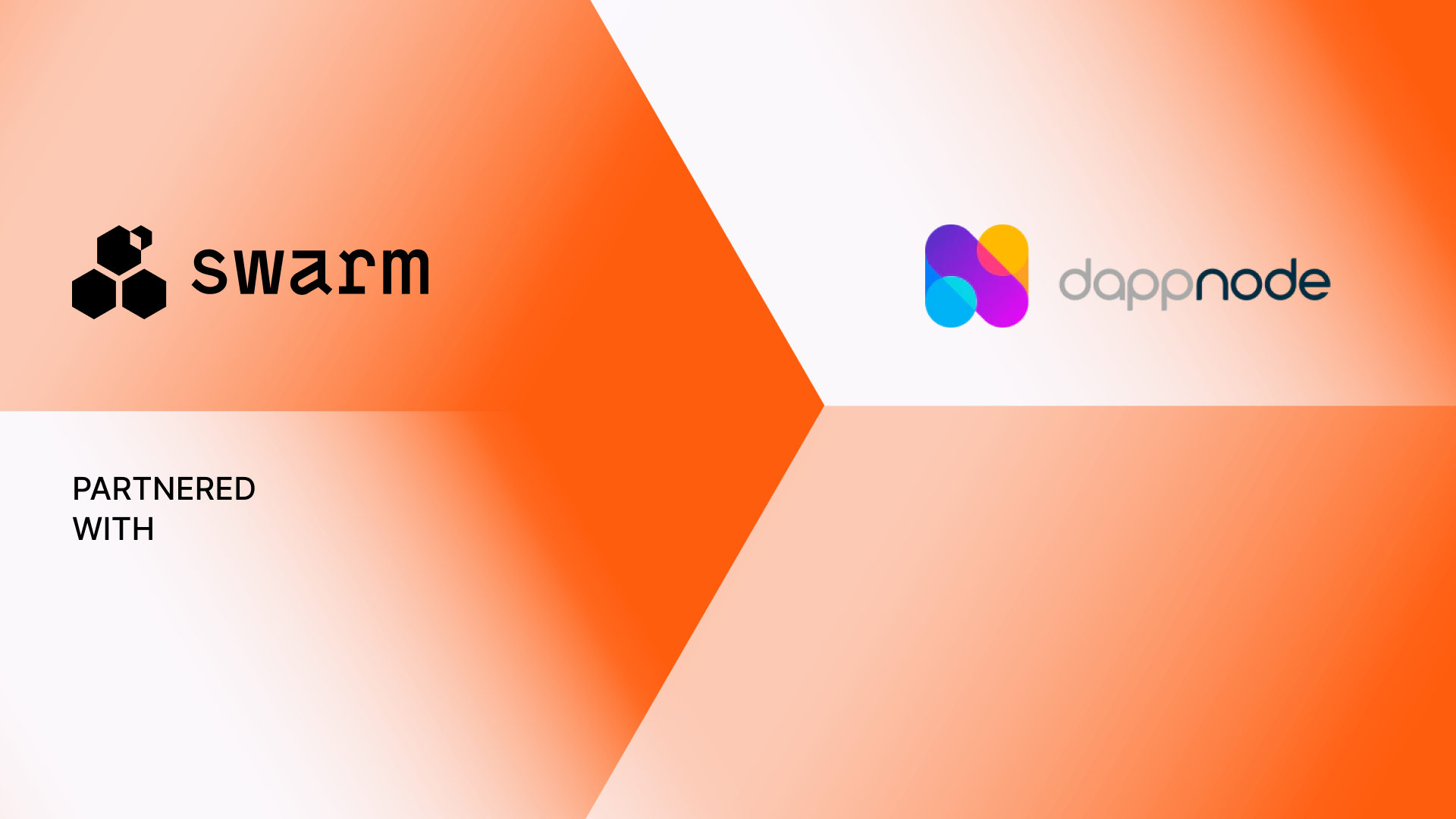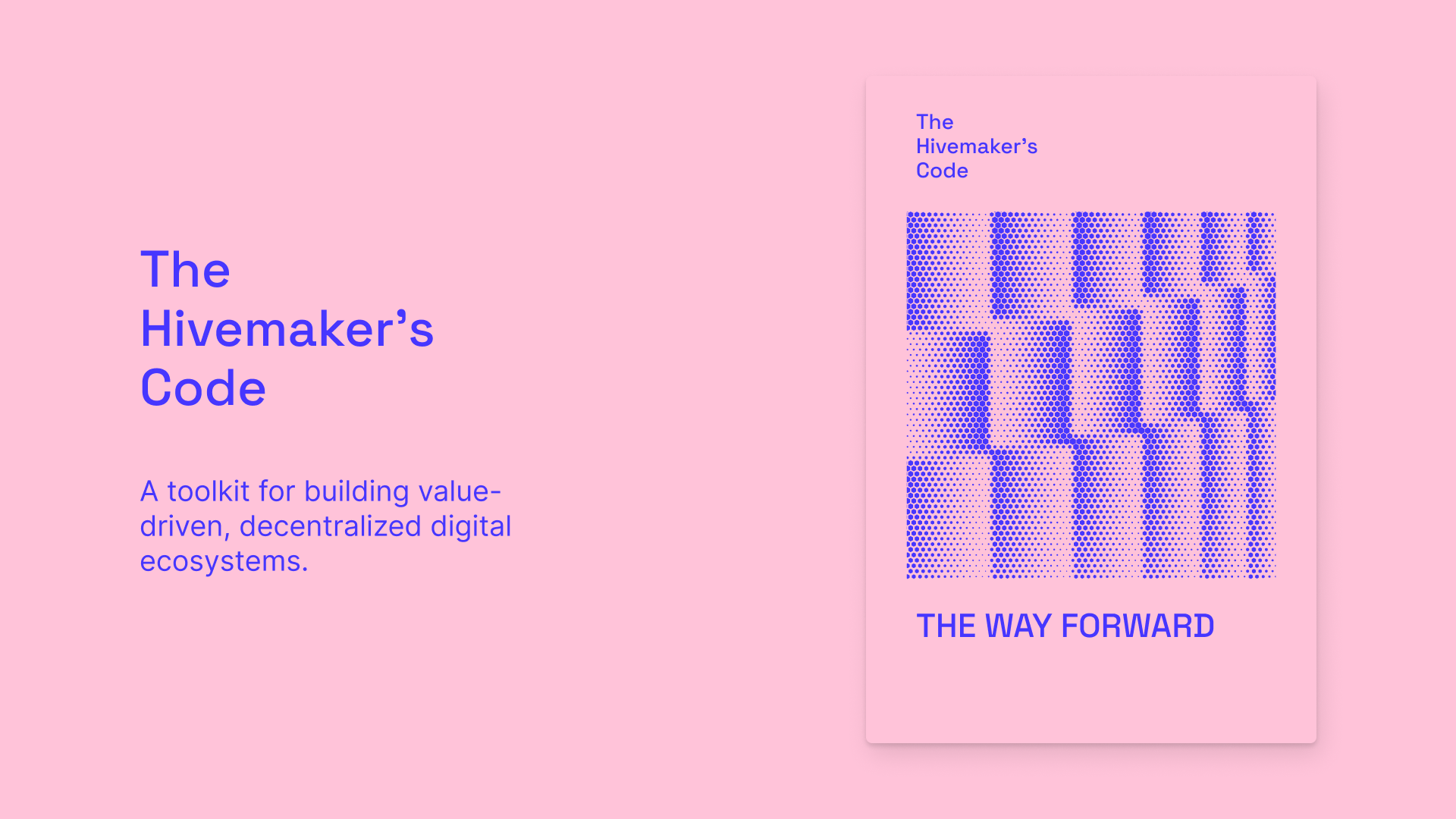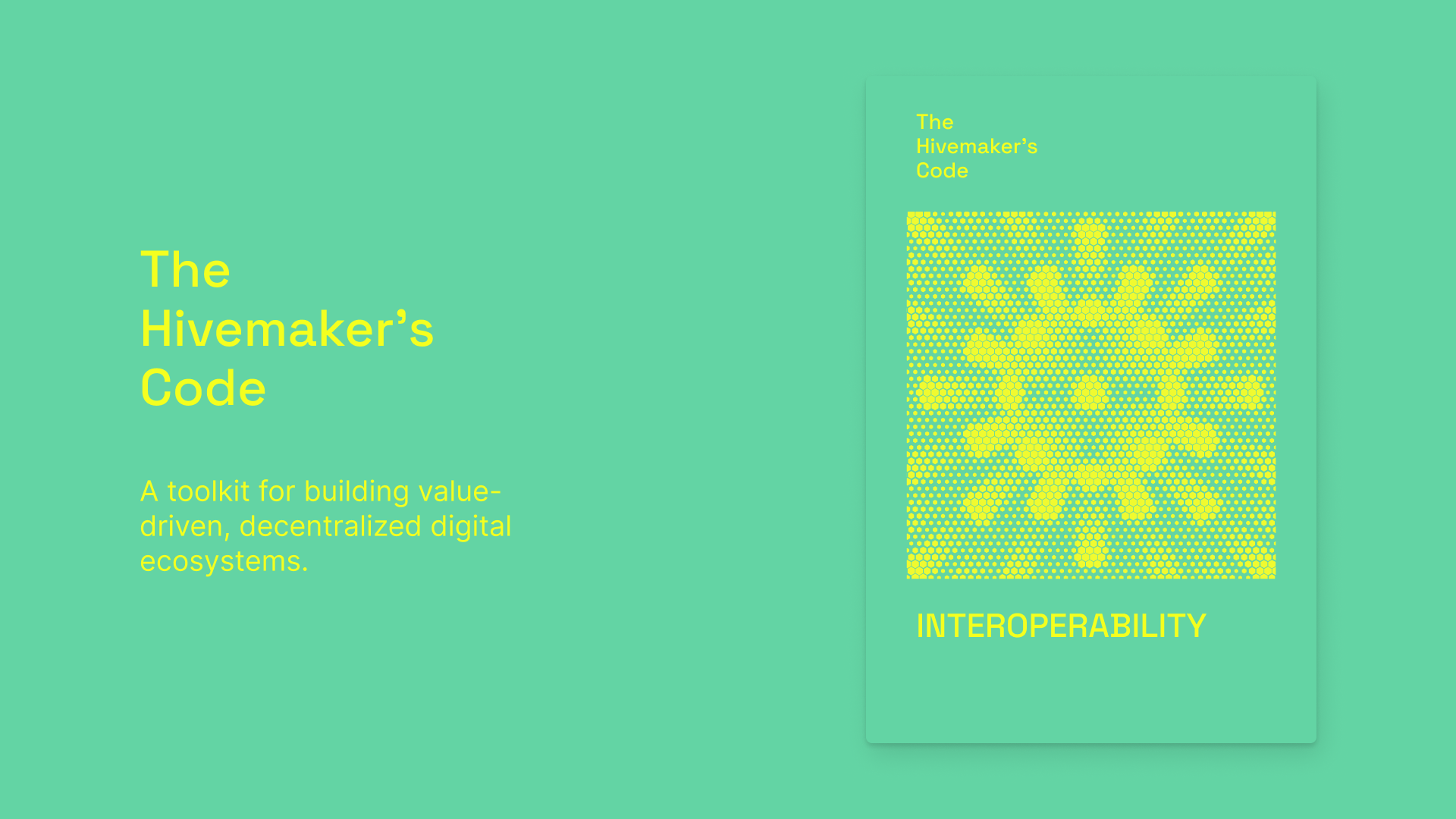This article is part of The Hivemaker’s Code series:
- Article 1: Introduction
- Article 2: How do Ecosystems Grow?
- Article 3: Cooperating on Blockchain
- Article 4: The Satoshi’s Dream
- Article 5: Anonymity in the Cryptosphere
- Article 6: Democracy and Decentralization
- Article 7: Is Net Neutrality Important for Blockchains?
- Article 8: Why Interoperability is the Bedrock of Digital Freedom
- Article 9: The Way Forward
Is Blockchain Really Zero-Trust?

Authors: Oliver Lukitsch, Michal Matlon, Gregor Žavcer, Thomas Fundneider, Markus Peschl, Lena Müller-Naendrup
On February 11th, 2009, shortly after 10 p.m., a user with the pseudonym Satoshi Nakamoto wrote a post on the Peer to Peer Foundation forum. He announced that he had developed a new, decentralized online cash system. Satoshi’s idea was to remove trust from the process of paying.
“The root problem with conventional currency is all the trust that’s required to make it work,” he wrote. “The central bank must be trusted not to debase the currency, but the history of fiat currencies is full of breaches of that trust. Banks must be trusted to hold our money and transfer it electronically, but they lend it out in waves of credit bubbles with barely a fraction in reserve.”
He then continued to describe how publicly available encryption algorithms have already allowed people to take control of their privacy, removing the need to trust administrators of computer systems to protect their personal information. “It’s time,” he said, “we had the same thing for money.”
Fast forward to 2022, and we still don’t know who Satoshi is. His creation, Bitcoin, however, started a new era of cryptocurrencies which captured worldwide attention and amassed almost 3 trillion US dollars in market value in November 2021. That’s almost as much as the value of the second biggest company in the world - Microsoft. Behind this story, an even more fundamental shift is taking place that challenges our established notion of trust.
Our whole human society is built on trust. We trust complete strangers to such a degree, that if we started questioning it, virtually all of our daily activities would become impossible. At the same time, the main motto of the crypto world became “removing the need for trust”. So what does this mean for the future of human interactions? And why does this topic surface now, on the cusp of an ongoing fusion of the physical and virtual worlds in which we live?
The Digital Trust

The topic of trust is central to social ecosystems and thus even more so to today’s digital ecosystems. Because they exist in a virtual world, they enable a huge social space with almost unfathomable possibilities for interaction. At the same time, however, precisely because they exist in the virtual world, they are extremely vulnerable. They are connected to a worldwide network - the Internet, accessible from any place, from New York to Ghana. This means that at any time, they can be attacked remotely, by hidden agents who can access and steal sensitive and valuable data.
The attackers often rely on everyday-life interactions between network users and exploit them in ways that just wouldn’t be possible in the physical world. Before the digital age, most social transactions took place face-to-face, allowing the participants to intuitively and more or less directly assess the trustworthiness of their counterparts. Closing a business deal in person lets you see how the other party behaves and gives you a lot of additional clues, such as their non-verbal communication.
Take a typical phishing attack. These often involve emails that pretend, with more or less success, that they come from a company you trust and entice you to provide your password or other sensitive information into a fake website. There’s something much more sinister and muddy about sharing your personal information online than handing it over to a bank teller sitting right in front of you at your local branch. Online, you can never feel certain that what you see is real and trustworthy.
This physical presence and the cues it provides have been the primary way we build trust with others. And while we could think about how this physical dimension can be transferred into the digital world, today’s digital ecosystems might not aim for high levels of trust in the first place. Instead, they seem to focus on bypassing trust and minimizing its necessity.
Some philosophers like Judith Baker, propose that this is a rational approach. According to them, trust always involves risk. There’s always the possibility and risk that the people we trust won’t keep their side of the agreement. If there was no such risk, we also wouldn’t need to trust others. So if we want to reduce risk, it would logically lead us to reduce the need for trust.
Another popular argument says that trust can make you resistant to change your views with new evidence. For instance, believing that a close relative would not harm anyone could make you resist the truth that they are actually a murderer. Trust and rationality seem to come apart.
To Trust or to Zero-Trust?

There are two approaches that makers of digital ecosystems can take towards solving the question of trust. On the one hand, they can embrace the risk that trust normally entails and take the so-called “trust-risk” approach. On the other hand, they can dispense with trust altogether, taking a “zero-trust approach”.
Both approaches have advantages and shortcomings. Embracing the balance of trust and risk allows you to grow the value of trust in your ecosystem. In contrast, zero-trust can minimize security risk in the system while also erasing any necessity for trust between people in it. While this approach increases security by removing the possibility to compromise some of the actors, it also encourages a trust-less value system.
Let’s take a closer look at these approaches and think about how to deal with the topic of trust when building digital ecosystems. After all, the original conditions under which people trust each other have changed significantly in recent years. We talk to others, share our secrets, buy clothes, close business deals, and start new relationships, all in the digital world.
When looking at our future, can we still speak of trust at all? And who is it that we acknowledge as the object of our trust? How can we find our way out of the choice between trusting blindly and removing trust completely?
Different Notions of Trust

When talking about digital ecosystems, we can distinguish between two concepts of trust:
- Interpersonal trust, which exists between two or more people
- Non-interpersonal trust, which you place in institutions, government, A.I., or yourself
While we could say that even in the second case, there is always a person who we have to trust in the end, it’s worthwhile to consider this difference. As current developments show, we have to think more and more about the trust we put into technologies such as AI or blockchain, so that we don’t have to trust the other users.
What is Needed to Trust Someone

Let’s dig a bit deeper and take a look at what is necessary for people to trust someone to behave a certain way.
First, we have to believe (or hope) that the trustee is competent to do what they are entrusted to do. We could never trust someone in taking care of our children if we knew that they were incompetent to do so.
Second, to trust, we must also be optimistic about the other person’s commitment to what we expect him/her to do. Especially rationalist philosophers would claim that the trustee’s commitment and competence will be enough for making them trustworthy.
They say that to trust another person, it doesn’t matter whether they are motivated by goodwill. If this were the case, you could, for example, trust someone who has your interest in mind even when it’s tied to their, possibly immoral, self-interest.
Say you get a flat tire. You should trust someone who stops to help you change it, by this way of thinking, both when they do it altruistically, as well as when they do it to delay a date they are not looking forward to.
In contrast, the philosopher Annette Baier developed the influential idea that trust necessarily involves the goodwill of the trustee (to commit to what is expected of him). It is an idea that had a considerable impact outside of philosophy, in areas such as law and bioethics. The idea is that we trust a person only if that person’s commitment is driven by benevolence. One might wonder whether this is really necessary for trust. Yet, goodwill is what helps keep apart trust from mere reliance.
To take one example. You might rely on your business partner not to jeopardize your joint business. But you might also rely on him only because he is pursuing his own interest. You don’t need to trust her to have such a reliable relationship. In contrast, you could have a business partner who also has your best interest in mind. That would be a person you actually trust because you can assume their good will toward you.
For digital ecosystems, reliance and security are major concerns. Trust, on the other hand, involves a moral concern any human ecosystem will face - whether digital or not. It’s one thing to build an ecosystem that minimizes the need for trust, but it’s quite another to build one which won’t enable or even discourages trust. Nevertheless, such ecosystems are often created today under the idea that trust is something undesirable.
How to reconcile both the enhanced reliability of a system with enabling trust between humans is a fundamental question for building purposeful and enabling digital ecosystems. In times when trust in other people and institutions is so low in our societies, we should strive for design decisions that start repairing this divide and build up social capital - the fundamental building block of a well-working society.
Technology Can’t Be Trusted (Literally)
 Returning to Satoshi Nakamoto’s post from earlier and the events it spawned since it’s clear by now that blockchain is an ideal place to explore the question of trust in the digital world. Blockchain technology is often credited with making trust obsolete, but at the same time, some credit it with enabling, redirecting, or replacing trust. What is it then?
Returning to Satoshi Nakamoto’s post from earlier and the events it spawned since it’s clear by now that blockchain is an ideal place to explore the question of trust in the digital world. Blockchain technology is often credited with making trust obsolete, but at the same time, some credit it with enabling, redirecting, or replacing trust. What is it then?
The original Bitcoin Whitepaper describes blockchain as trust-free. It says that its users will not be reliant on having to trust someone. When transferring money over your regular bank account, you have to trust the employees of the bank to do all the work required. However, in the case of blockchain, which has already advanced since the creation of Bitcoin, users can create self-enforcing contracts that don’t depend on a man in the middle.
When we take a closer look though, we notice that trust hasn’t disappeared completely from the equation. As the anthropologist Bill Maurer and his colleagues suggested, while it’s true you don’t need to trust an intermediary, you still “must simply trust the code or, more precisely, the cryptographic algorithm.” (Maurer et al., p. 264)
Today, many scholars believe there is no such thing as trust in technology – but only the belief that technology is reliable. Since technology can’t have any goodwill on its own (at least not yet), you can’t really build up the same trust you would have in another person.
So in the context of blockchain, we might say that the technology is reliable and secure, but that the entity we actually trust is the group of people who participate in the network. To name this situation, Reid Hoffman, the founder of LinkedIn coined the term “trustless trust” or what Kevin Werbach called “distributed trust”.
But how can we trust anyone if we lack any closer, contextual knowledge about the people we transact with on the blockchain? Is trust even necessary in this situation? Or do we just feel, as Satoshi described it, that trust is redundant and we can simply rely on the system in place?
The Human Face of Blockchain

Our answer to the question of whether blockchain-based systems can be trustworthy will change depending on what part of the system we look at.
First, trust in individual people is really redundant when making transactions on the blockchain.
Second, true trust in technology, and specifically, code, is also not required (or possible), because it’s a matter of reliability, as we mentioned earlier.
Third, however, looking at the entire ecosystem developing and running blockchain technology, trust is back in the game. Just like our trust in a bank can be betrayed by the institution, so can our trust in the whole blockchain ecosystem.
But staying with the third point, our trust in the ecosystem might actually have a human face after all. As Mattis Jacobs notes, even though there are “trust minimizing features within the narrower technical system, they corroborate that humans are still very much in the loop in blockchain-based systems and they can exert power individually.” (Jacobs, 2021, p. 580).
We need to distinguish between experts such as engineers and regular users of blockchain technology. Because interpersonal trust becomes important anytime we rely on experts who build, evolve, or maintain digital ecosystems. In a nutshell, the average non-expert user must trust the expert simply due to a lack of knowledge.
Trust in Blockchain is Trust in Experts

Since the 1970s, it has become an intellectual fashion to think differently about how our thoughts are infused with meaning. Hilary Putnam, a philosopher and computer scientist, coined the term “linguistic division of labor”. What happens in this division of labor?
For example, it describes how you can talk about Aspirin without knowing its chemical formula and biochemistry, because you can rely on just using the term “Aspirin”, whose meaning an actual expert already worked out in detail.
Or you might have no idea how to check whether the ring on your finger is really made of gold or is fake, but you can still talk about it as a gold ring because, at some point, you trusted an expert telling you that it really was gold.
The same applies to blockchain technology. If you are a programmer whose job is to build or research blockchain-based digital infrastructure, you are the expert in this case. But there are many more who have a rough-and-ready understanding of blockchain technology at best. Then, there are many more who are in it for the money without really knowing what they are investing in.
Even if the system is really built in a way that makes trust fully redundant, many people don’t have the means to test and prove this. They have to trust the word of engineers that the system will work as supposed.
This means that if we want to use the full potential of blockchain to improve the world where relevant, we probably won’t be able to convince people to trust in the technology itself. It’s the experts that will have to be convincing and be considered trustworthy by people, to begin with. So the success of blockchain actually depends on trust, even if its core technology is trust-less.
Can you Trust the Boundaries?

Another place where trust comes into play are the boundaries of the blockchain infrastructure. Practically speaking, people who engage with blockchain today are still interacting with many additional actors like regulators, centralized exchanges, or potential attackers.
Anytime they need to trade on-chain assets for something else, there are vulnerable moments that require the support of trusted others to realize the exchange. A very recent example is cryptocurrency exchanges, where you can trade crypto-assets for fiat money. If such interfaces between blockchain networks and off-chain activities can’t be fully trusted, people won’t be able to trust the blockchain-ecosystem as a whole.
Some proponents of Web3 envision a world without fiat currencies and therefore see no need to exchange cryptocurrencies for fiat money. For them, this is a temporary problem. The existence and vulnerability of the boundaries is then only an issue if Web3 doesn’t fully deliver on its promises.
[Box: The three value propositions of blockchain and how they handle trust]
- Trust requires the reliable commitment and goodwill of individuals, so blockchain eliminates the need for trust: there is no risk of interactions being compromised by malicious intent on the chain.
- Trust is just a judgment of reliability, therefore the blockchain enables trust: we can trust that the technology renders fraud impossible.
- Blockchain technology enables the replacement of individual actors with a collective trustee. Therefore, the blockchain enables trust, as the entire decentralized network “vouches” that the transactions on the chain have not been compromised.
What Drives and Prevents Trust in Blockchain Ecosystems?

So far, we talked about what trust means in the context of blockchain-based digital ecosystems. Now, let’s take a look at what needs to be done to enable and encourage trust while using this “trust-less” infrastructure.
Trust and Regulation
Regulation is often painted as the enemy of innovation. A highly regulated market is said to undermine people’s entrepreneurial freedom. However, historically, regulation has also provided for a safe environment for users to live in.
In fact, the regulation of the internet is considered an important step towards its wider adoption. As Kevin Werbach, Professor of Legal Studies & Business Ethics at the University of Pennsylvania, suggests, “the knowledge that governments were operating to police abusive practices helped promote trust in the new and unfamiliar world of virtual transactions. Internet advocates began to call for government intervention to enforce network neutrality rules and privacy protections.”
Especially proponents of crypto-anarchism hold the idea that laws would ideally be replaced by contracts made between individuals. They say that as long as individuals voluntarily agree on the terms, any contract is fine. Such agreements can also be created on the blockchain and therefore become unstoppable.
However, Werbach suggests the regulatory environment is not something we can ignore, because it just realistically will (and according to our opinion, should) exist. Instead, he says that blockchain technology poses three questions:
- What laws does blockchain supplement?
- What laws does it complement?
- Which laws can it substitute?
We must answer these questions in ways that allow for freedom of expression, ideas, and innovation, yet provide for a trusting ecosystem that draws in new users.
Sanctions Don’t Lead to Trust
Blockchain technology provides for a trust-less environment. Yet, the ecosystems that are built on such technology might actually aim for increasing trust between their users by using reputation and sanction mechanisms.
However, psychological studies have shown that an environment that sanctions people who don’t cooperate doesn’t increase the trust within a group. Instead, they diminish trust. This suggests that the mere presence of a sanctioning system can make people dependent on the system to police behavior – and therefore reduces the need for trust, to begin with.
A similar, yet desirable effect might be driven by blockchain technology. As the original Bitcoin whitepaper argues, the blockchain enables its users not to rely on trust. It is, however, one thing to make trust redundant and quite another thing to actively discourage trust. Any ecosystem based on the blockchain should therefore pay attention to how its trustless technology is used to enable the interaction between its users.
Trust and knowledge-sharing in the digital domain

To conclude, we believe that blockchain-based ecosystems must overcome a paradox to succeed.
On the one hand, they must be reliable and secure without a man in the middle – in fact, they are poised to be more reliable and secure because there is no man in the middle.
On the other, a vibrant, living ecosystem needs trust to flourish, as much as it needs to reduce the risk of its users. For an ecosystem to thrive and for innovations to emerge, knowledge must be shared among its participants.
That means trust is essential for the exchange of knowledge. Any ecosystem that stands for open-source, the accessibility of knowledge, and its democratization through decentralized storage must embrace trust as a means to connect people. Moreover, people are more likely to share knowledge when they trust one another.
Trust in a community is, therefore, an essential enabler for its growth and emergence of any knowledge-driven digital ecosystem. And we need to keep that in mind when designing new ecosystems, where people will interact in the future.
Key Insights

- In a digital ecosystem, trust is essential for its adoption by new users.
- Trust is an enabler for knowledge sharing in organizations, which leads to more innovation.
- Trustless technology can diminish trust between its users because they gain a tendency to fully rely on the system to prevent bad behavior.
- Trust without risk is perhaps preferable to zero-trust when designing digital ecosystems.
- Even though blockchain technology is trustless at its core, people still need to trust the ecosystem based on it - the developers, experts, and other stakeholders.
- Ecosystems built on the blockchain shouldn’t only rely on their trust-less on-chain infrastructure, but actively promote trust among users to flourish.
Essential References

Baier, Annette. 1986. “Trust and Antitrust.” Ethics 96 (2): 231–60.
Baker, Judith. “TRUST AND RATIONALITY.” Pacific Philosophical Quarterly 68, no. 1 (March 1, 1987): 1–13. https://doi.org/10.1111/j.1468-0114.1987.tb00280.x.
Dalkir, Kimiz. Knowledge Management in Theory and Practice. 3rd ed. Cambridge, MA, USA: MIT Press, 2017.
Faulkner, Paul, and Thomas W. Simpson, eds. The Philosophy of Trust. Oxford University Press, 2017.
Jacobs, Mattis. “How Implicit Assumptions on the Nature of Trust Shape the Understanding of the Blockchain Technology.” Philosophy & Technology 34, no. 3 (September 1, 2021): 573–87. https://doi.org/10.1007/s13347-020-00410-x.
Katherine Hawley. “Trustworthy Groups and Organizations.” In The Philosophy of Trust, edited by Paul Faulkner and Thomas W. Simpson, 230–50. Oxford University Press, 2017.
Maurer, Bill, Taylor C. Nelms, and Lana Swartz. “‘When Perhaps the Real Problem Is Money Itself!’: The Practical Materiality of Bitcoin.” Social Semiotics 23, no. 2 (April 1, 2013): 261–77. https://doi.org/10.1080/10350330.2013.777594.
McLeod, Carolyn. “Trust.” In The Stanford Encyclopedia of Philosophy, edited by Edward N. Zalta. Metaphysics Research Lab, Stanford University, 2021. https://plato.stanford.edu/archives/fall2021/entries/trust/.
Mulder, Laetitia B., Eric van Dijk, David De Cremer, and Henk A. M. Wilke. “Undermining Trust and Cooperation: The Paradox of Sanctioning Systems in Social Dilemmas.” Journal of Experimental Social Psychology 42, no. 2 (März 2006): 147–62. https://doi.org/10.1016/j.jesp.2005.03.002.
Usoro, Abel, Mark W Sharratt, Eric Tsui, and Sandhya Shekhar. 2007. “Trust as an Antecedent to Knowledge Sharing in Virtual Communities of Practice.” Knowledge Management Research & Practice 5 (3): 199–212. https://doi.org/10.1057/palgrave.kmrp.8500143.
Werbach, Kevin. “Trust, but Verify: Why the Blockchain Needs the Law.” Berkeley Technology Law Journal 33, no. 2 (2018): 487–550.
Discussions about Swarm can be found on Reddit.
All tech support and other channels have moved to Discord!
Please feel free to reach out via info@ethswarm.org
Join the newsletter! .
